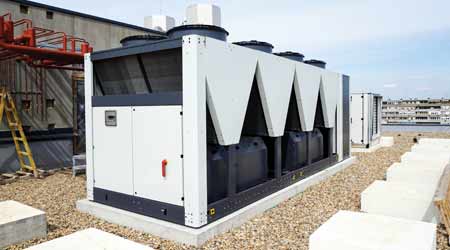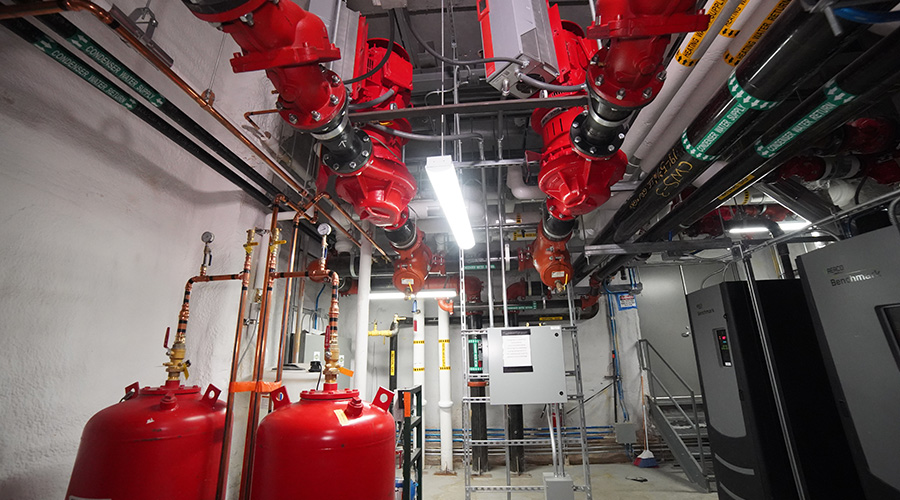 Proper water treatment is crucial to keeping cooling systems employing recirculating water operating effectively.
Proper water treatment is crucial to keeping cooling systems employing recirculating water operating effectively.How To Prevent Common Water Treatment Problems
FMs need to collaborate with design engineers, contractors, and commissioning agents to ensure proper heat transfer, sufficient flow, and an appropriate system performance level.
To prevent problems, including minimizing erosion of system metals by ensuring optimum water velocity, sufficient flow should be provided to maintain good turbulence and scrubbing of metal surfaces by the water. To deliver proper heat transfer, equipment manufacturers, system design engineers, construction contractors, and commissioning contractors are all supposed to closely coordinate. They should arrive at a system performance level where flow is optimized from the time of the initial system build, through hydro-testing, commissioning, and finally turn-over to the owner/operator.
Starting with the time the initial hydro-test is first conducted through to when the building owner or facility manager takes over responsibility for the system, a competent water treatment professional must be a significant member of the construction team to ensure that system design conditions are being continuously met. Prior to the first wetting of the system until turn-over there must be a continuous chain of responsibility to ensure that the system is properly cleaned so that any oil, dirt, rust, or foreign matter is removed and the system is properly treated when it is wetted. It is also important to ensure that, between hydro-tests and up until commissioning, the system is kept free of deposits. Inspection reports, including the relevant data and photographs, need to be provided to the owner's representative prior to turn-over.
After turn-over, the owner must ensure that the water treatment company and its representative are providing a treatment program that includes all of the proper equipment, along with all of the chemicals and services required. This includes training of operators; start-up of the treatment program; ongoing proper use of monitoring devices; proper record keeping to allow for a thorough diagnosis of results on an on-going basis; periodic equipment inspections; and proper documentation with data, photos, and analysis; and a periodic review of these actions.
We all know that water treatment is just one of many that have to be implemented and controlled in order to preserve asset value, minimize water and energy consumption and cost, and to minimize legal risks and operating costs. The competition for the contractor to perform all of these steps along the way is intense, with all of the parties understandably interested in maximizing their profits, and minimizing their work loads and labor costs.
So what is the driving force to justify all of these efforts required for effective water treatment? There are a growing number of severe and premature cases of system failure, respiratory related illness, disability, and deaths. These lead to litigation with all the related cost of business disruption, settlements, and awards, which can amount to millions of dollars.
The key to minimizing these risks is to insist that the specifying engineer and the eventual system owner/operator capture this responsibility into tight, performance-based specifications, and require that all parties ensure that quality work is performed by contractors to meet all specifications. Any contractors that cut corners need to be eliminated from the process. The building owner’s accountants and risk managers must be fully apprised of the costs of doing all of the necessary steps vs. the costs and risks of not performing them.
The alternative? Well, that's where the lawyers, consultants, courts, and expert witnesses come in.
Related Topics:

















